The actual voyage to the operational area began with the manoeuvre whistle of the anti-aircraft frigate "Hessen" (F 221, class 124) in Wilhelmshaven's 4th entry shortly before ten o'clock. The departure took place in wintry calm seas and moderate visibility, but this will probably not last long.
The frigate "Hessen" has been ordered to the Mediterranean by the naval command in order to be able to join the units of the EU Operation Aspides (Shield) immediately following the necessary parliamentary decision. Participation in this operation differs from participation in previous EU and NATO projects in that it basically means "live firing": whereas the defence against threats from virtual air, sea and underwater targets and mines or training targets has been practised to date, in the Red Sea it will now be the real threat from a large number of weapons systems that are now regularly used by the Houthi militias against shipping. Frigate Captain Volker Kübsch (44), Commander of the frigate, and Vice Admiral Jan Kaack, Inspector of the Navy, have made this clear in press releases and personal interviews.
Who does it?

Armament and level of training were decisive factors in the choice of the "Hessians". Until a few weeks ago, the crew of the "Hesse" as the lead ship and part of the Very High Readiness Task Force (Maritime) - VJTF(M), NATO's rapid reaction force in the North and Baltic Seas. It had previously carried out a firing mission with its missiles - before that, it had been responsible for protecting the US Navy's newest aircraft carrier, the "USS Gerald R. Ford", as an air defence unit in American waters for some time. In the last few days, the training ammunition on board was swapped for a full combat load, all other stocks were replenished and a clear material status was established so that the best possible conditions are in place for this deployment. After a visit on board and discussions with the crew, the inspector attested to her "professional composure". If anyone can do it, it's the "Hessen".
Inspector Navy
Kaack: "Since we are going into a fierce armed conflict there, which we have to assume from everything we see there, only a unit, a ship that can assert itself in terms of its armament and whose crew is 100 per cent trained to deal with this threat comes into question. The frigate "Hessen", which we have selected, is prepared for this. She is our gold standard, so to speak, if I may put it that way. She comes from the active command of a Very High Readiness Joint Task Force Maritime. What makes her special is that her radar systems and weapons are optimised for just such an eventuality. It has systems on board that have a range of around 400 kilometres and can therefore pick up even the smallest contacts." And in a thoughtful tone: "It will be the most serious deployment of the German Navy since then." The depressed mood and gloomy expressions on the pier in Wilhelmshaven at the departure ceremony emphasised this statement all too clearly!
Operation Aspides
Meanwhile, preparations for the EUNAVFOR Aspides operation are in full swing in Brussels. Following the informal meetings of first the defence and then the foreign ministers (31 January and 2/3 February), the elements are slowly coming together. Greece provides the operational headquarters (OHQ) with Joint Force Command South Centre Larissa. Larissa is EU-certified and was already used for an EU operation in 2014 (EUFOR RCA - Central African Republic). Italy has offered to assume operational command at sea on board one of its units. The operational plan, which has largely been finalised, envisages the deployment of at least three sea-based units for a period of twelve months. A sufficient number of nations have also registered their participation. The question of the budget remains to be clarified - between eight and ten million euros are estimated. Within the EU, the decision is to be taken in the Foreign Affairs Council on 19 February. While the High Representative Josep Borrell was still optimistic a few days ago that the programme could then be launched, he had to be patient due to the German situation: The German Bundestag's mandate for the participation of the "Hessen" in the EU operation cannot be granted before the week of 19-23 February.
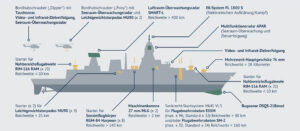
Application profile
The potential deployment of the "Hessen" in the Red Sea will not only be an endurance test for the ship and crew, it also marks another piece of the mosaic in the turning point for Germany. Now that the Houthis of this world have recognised the open sea as a new battleground (the sea dimension), it is now a matter of protecting the unprotected shipping traffic that is vital for the industrialised nations of the West. Convoy operations and the protection of individual ships from attacks from the air and on the water surface are required in the "goalkeeper function" as "flypaper". It is also about the protection of an accumulation of merchant ships by means of long-range weapons deployment and the protection of convoys in co-operation with several weapon carriers in an operational network. No exercise - all armed! The EU mandate does not include the use of weapons against targets on land - this will be the responsibility of those who have already thrown their weapons into the fire on the ground. It is also not a fight against Houthi militias or the protection of the population terrorised by them, but exclusively the defence against attacks by the militias from the Yemeni coastal region with Iranian missiles and replica missiles and drones manufactured specifically for this purpose.
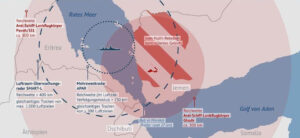
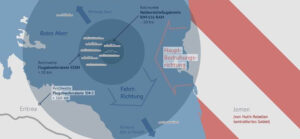
Prospects of success
Some people doubt that the presence of international naval forces can guarantee safe passage in the region. And rightly so, because deterring the Houthi rebels will not work - after all, they have Iran behind them and they have nothing to lose. In recent days, there have been renewed attacks by the Houthis in the Red Sea and its approaches despite several waves of air strikes by the USA and the UK. Little intimidated, they claimed attacks on two merchant ships, the "Star Nasia" and "Morning Tide", on 7 February. A Greek merchant ship reported an explosion on board on 6 February. According to the U.S. Central Command, two unmanned surface vessels (drone boats) were neutralised on 5 February. However, the threat could spread even further and again affect the entire sea area around the Arabian Peninsula in terms of weapons range and resupply from Iran by sea. Somali pirates are also once again affecting the security situation.
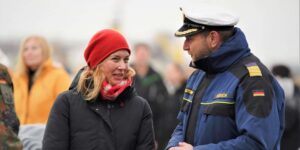
Germany at the turn of an era
In the meantime, Berlin's politicians are practising their traditionally moderate German pace and adhering to procedures and rules. It was already foreseeable in mid-January that the meeting calendar would not allow the Bundestag mandate to be passed before the week of 19-23 February - with the effects on the EU and other nations described above. And contrary to the popular term "parliamentary army", members of the Bundestag kept a low profile at today's extraordinary event. In addition to the Parliamentary Commissioner for the Armed Forces, Eva Högl, only the Parliamentary State Secretary in the Ministry of Defence, Siemtje Möller, was on board and on the pier to see the crew off in Wilhelmshaven.
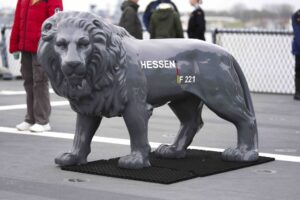
The "Hessen" has departed with a crew of around 250 soldiers for the first contingent of Aspides, initially for three months. In addition to the actual regular crew, this includes the flight operations team for two Sea Lynx helicopters and additional operational personnel such as a medical team, soldiers from the naval battalion (for self-protection, e.g. in defence against small drones and for guarding the harbour) and a military pastor. This type of staffing involves a great deal of effort in times of a tight personnel situation. The strength of the crew and non-commissioned officers in Operational Flotilla 2, to which the frigate belongs, is around 65 per cent. Against this background, this is a small "all hands on deck" manoeuvre for the navy. After all, it also involves staff personnel in the European Aspides command centres, convoy specialists as military advisors and embarked naval officers on merchant ships if the protection of maritime shipping is to be taken seriously - as recommended by the military advice of the Inspectorate of the Navy. Trend reverses back and forth - now it is also becoming apparent that highly praised trend reverses in particular only have low fire resistance!
One more word . .
The editors of marineforum and marineforum.online wish the "Hessen" and her crew all the best and hope that they do a good job - and return home safely. We will stay tuned and report - not always immediately, but as soon as we have all the facts.

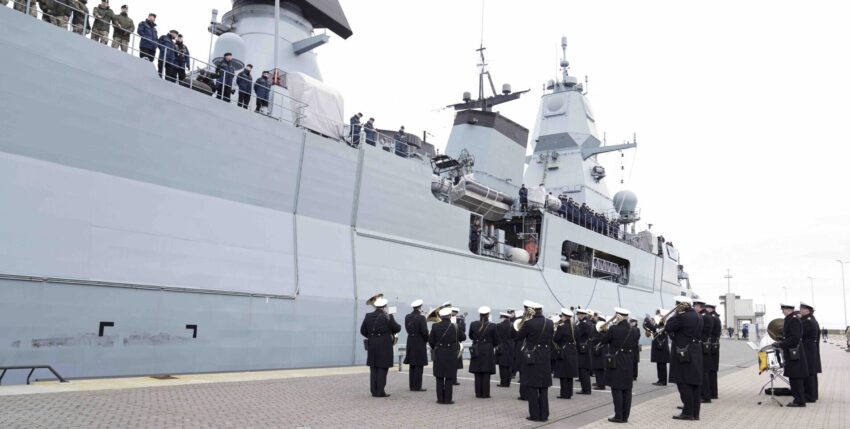









One Response
Top, all the best, have a good trip 😘🎈